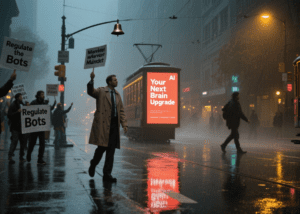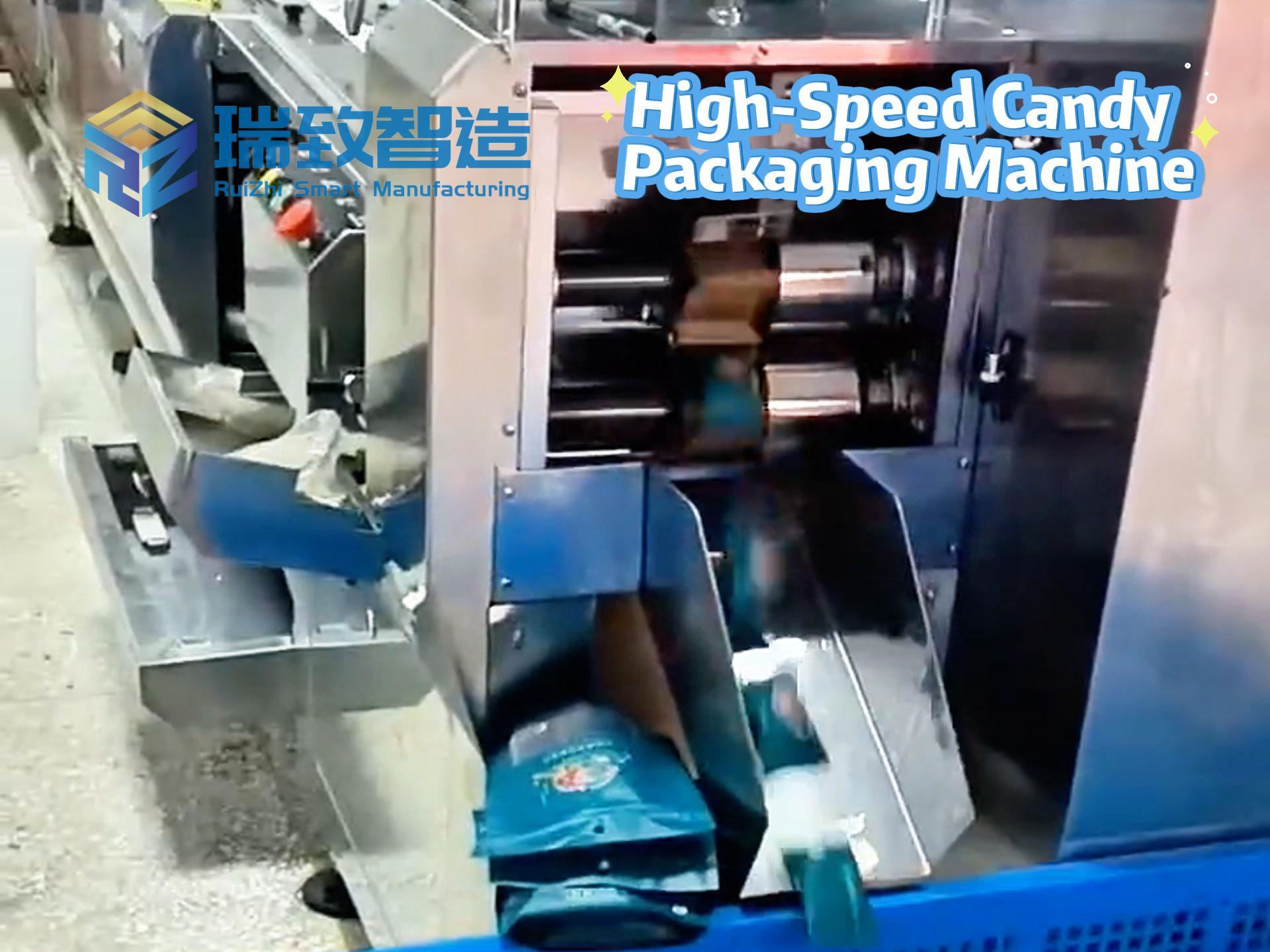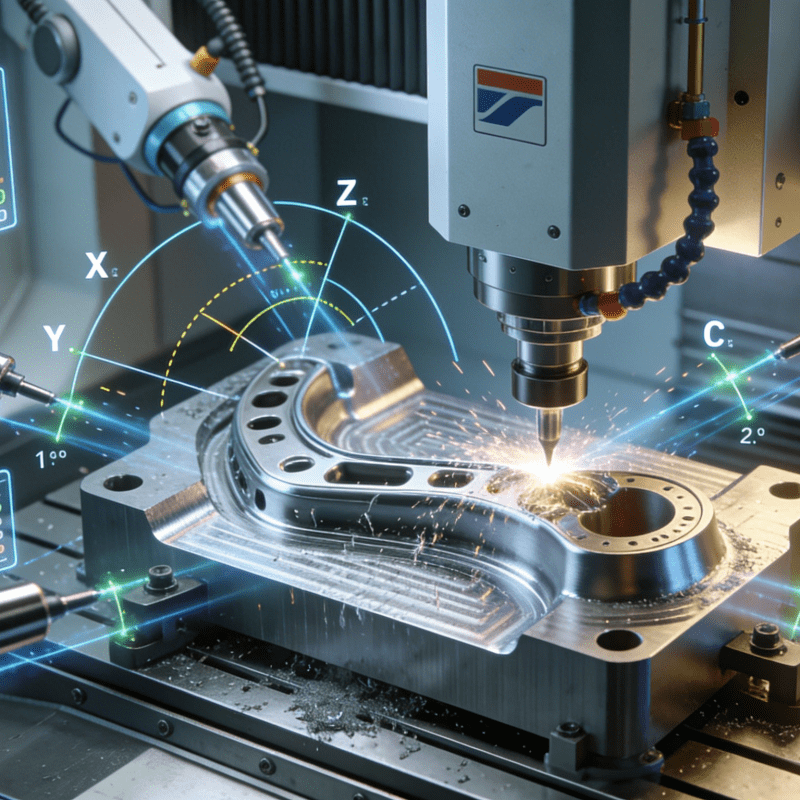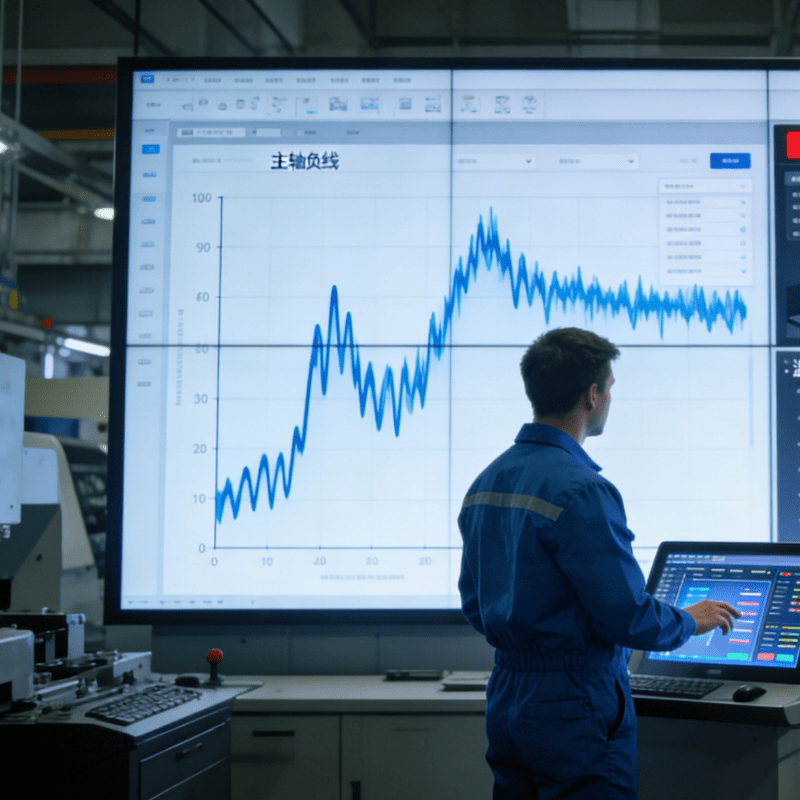
Beneath the glittering skyline of San Francisco, where the bay’s fog curls around skyscrapers and tech history hums in every cable car clang, a quiet revolution is unfolding. Inside the Exploratorium, a waterfront museum where curiosity meets cutting-edge, families aren’t just observing artificial intelligence—they’re wrestling with its soul. Kids giggle as AI misidentifies their shadow puppets as “dancing octopuses,” teens lean in to hear AI croon original songs, and adults pause to scribble on cards: “Will AI cure Alzheimer’s?” one asks. Another reads, “What if we forget how to dream for ourselves?”
Here, in this temple of experimentation, the hype and fear around AI collide in tangible ways. “We’re not just showing technology—we’re letting people feel it,” says Doug Thistlewolf, who oversees the museum’s AI exhibits. “It turns abstract panic into a conversation.”
That conversation has spilled beyond museum walls, seeping into every corner of the city. AI billboards glow above Market Street, promising “Your Next Brain Upgrade.” Co-working spaces once filled with crypto entrepreneurs now host AI “prompt engineering” workshops. Even protests have taken on a digital edge: Demonstrators march with signs reading “Regulate the Bots, Not the People” outside the sleek headquarters of OpenAI, the company behind ChatGPT, while nearby, Anthropic’s offices buzz with engineers racing to build “safer” AI systems.
This isn’t just another tech trend—it’s being called a new gold rush. San Francisco, long overshadowed by Silicon Valley’s suburban giants like Meta and Google, has emerged as AI’s ground zero. Startups with names like Scale AI and Perplexity command billions in funding, their valuations soaring as fast as the fog burns off in the morning sun. The city’s empty office towers, leftover from remote work’s rise, are filling again—this time with data scientists and machine learning experts clutching lattes and whiteboards covered in algorithms.
The boom has even breathed new life into local politics. Newly elected Mayor Daniel Lurie, a former nonprofit leader, campaigned on embracing AI while taming its excesses, promising to turn San Francisco into “the world’s first AI-safe city.” His inauguration speech, delivered steps from where gold prospectors once crowded the docks in 1849, drew parallels between the two eras: “Then, they dug for metal. Now, they mine data. But both chase the same dream—progress, wealth, a future made here.”
Yet for all the optimism, anxiety simmers like the city’s famous fog. Tech layoffs, which began in 2022, have left many wary of AI’s promise to “create more jobs than it replaces.” A barista in the Mission District, whose café now serves AI engineers ordering “decaf neural networks,” sums up the mood: “They’re building the future, but will any of us afford to live in it?” San Francisco’s median rent, already the highest in the nation, has spiked 12% in AI-heavy neighborhoods, pricing out long-term residents.
The tension is perhaps clearest in the city’s creative corners. Artists use AI to generate surreal murals of the Golden Gate Bridge, yet worry their commissions will vanish. Writers attend “AI-proof your craft” workshops, debating whether ChatGPT is a tool or a rival. At a recent gallery opening, an AI-generated painting sold for $50,000—while a human artist across the room sold nothing.
Still, the momentum is undeniable. AI’s impact here isn’t just economic; it’s existential. From hospitals using AI to predict patient outcomes to homeless shelters deploying chatbots to connect people with services, the technology is embedding itself into the city’s DNA. Even the Exploratorium’s exhibits, once quirky novelties, now feel like dress rehearsals for daily life.
As the sun sets over the bay, casting the city in golden light, a tourist at the museum pauses to read a wall of hopes and fears. One card, scrawled in a child’s handwriting, stands out: “I hope AI learns to share.” It’s a simple wish, but one that captures San Francisco’s current crossroads—caught between the thrill of a new gold rush and the quiet fear that this time, the treasure might come with a cost.
In the end, AI isn’t just transforming San Francisco. It’s forcing the city to confront a question as old as the gold rush itself: What kind of future do we want to build—and who gets to be part of it?A New Gold Rush? How AI Is Reshaping San Francisco Beneath the glittering skyline of San Francisco, where the bay’s fog curls around skyscrapers and tech history hums in every cable car clang, a quiet revolution is unfolding. Inside the Exploratorium, a waterfront museum where curiosity meets cutting-edge, families aren’t just observing artificial intelligence—they’re wrestling with its soul. Kids giggle as AI misidentifies their shadow puppets as “dancing octopuses,” teens lean in to hear AI croon original songs, and adults pause to scribble on cards: “Will AI cure Alzheimer’s?” one asks. Another reads, “What if we forget how to dream for ourselves?” Here, in this temple of experimentation, the hype and fear around AI collide in tangible ways. “We’re not just showing technology—we’re letting people feel it,” says Doug Thistlewolf, who oversees the museum’s AI exhibits. “It turns abstract panic into a conversation.” That conversation has spilled beyond museum walls, seeping into every corner of the city. AI billboards glow above Market Street, promising “Your Next Brain Upgrade.” Co-working spaces once filled with crypto entrepreneurs now host AI “prompt engineering” workshops. Even protests have taken on a digital edge: Demonstrators march with signs reading “Regulate the Bots, Not the People” outside the sleek headquarters of OpenAI, the company behind ChatGPT, while nearby, Anthropic’s offices buzz with engineers racing to build “safer” AI systems. This isn’t just another tech trend—it’s being called a new gold rush. San Francisco, long overshadowed by Silicon Valley’s suburban giants like Meta and Google, has emerged as AI’s ground zero. Startups with names like Scale AI and Perplexity command billions in funding, their valuations soaring as fast as the fog burns off in the morning sun. The city’s empty office towers, leftover from remote work’s rise, are filling again—this time with data scientists and machine learning experts clutching lattes and whiteboards covered in algorithms. The boom has even breathed new life into local politics. Newly elected Mayor Daniel Lurie, a former nonprofit leader, campaigned on embracing AI while taming its excesses, promising to turn San Francisco into “the world’s first AI-safe city.” His inauguration speech, delivered steps from where gold prospectors once crowded the docks in 1849, drew parallels between the two eras: “Then, they dug for metal. Now, they mine data. But both chase the same dream—progress, wealth, a future made here.” Yet for all the optimism, anxiety simmers like the city’s famous fog. Tech layoffs, which began in 2022, have left many wary of AI’s promise to “create more jobs than it replaces.” A barista in the Mission District, whose café now serves AI engineers ordering “decaf neural networks,” sums up the mood: “They’re building the future, but will any of us afford to live in it?” San Francisco’s median rent, already the highest in the nation, has spiked 12% in AI-heavy neighborhoods, pricing out long-term residents. The tension is perhaps clearest in the city’s creative corners. Artists use AI to generate surreal murals of the Golden Gate Bridge, yet worry their commissions will vanish. Writers attend “AI-proof your craft” workshops, debating whether ChatGPT is a tool or a rival. At a recent gallery opening, an AI-generated painting sold for $50,000—while a human artist across the room sold nothing. Still, the momentum is undeniable. AI’s impact here isn’t just economic; it’s existential. From hospitals using AI to predict patient outcomes to homeless shelters deploying chatbots to connect people with services, the technology is embedding itself into the city’s DNA. Even the Exploratorium’s exhibits, once quirky novelties, now feel like dress rehearsals for daily life. As the sun sets over the bay, casting the city in golden light, a tourist at the museum pauses to read a wall of hopes and fears. One card, scrawled in a child’s handwriting, stands out: “I hope AI learns to share.” It’s a simple wish, but one that captures San Francisco’s current crossroads—caught between the thrill of a new gold rush and the quiet fear that this time, the treasure might come with a cost. In the end, AI isn’t just transforming San Francisco. It’s forcing the city to confront a question as old as the gold rush itself: What kind of future do we want to build—and who gets to be part of it?
What is the market price of the automatic vanity mirror production line?
Which manufacturers in China produce automatic vanity mirror assembly lines?




















